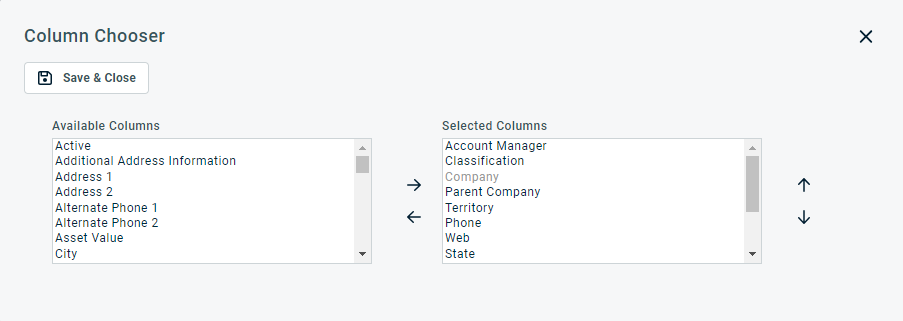Managing recurring ticket templates
PERMISSIONS Permission to edit or delete tickets and view/add/manage recurring tickets (recurring ticket templates). Search pages and features require the permission "Can view Recurring Ticket Template and Service Call Searches".
NAVIGATION Left Navigation Menu > Service Desk > Search > Recurring Ticket Templates
To open the page, use the path(s) in the Security and navigation section above.
- To display a list of all records of a given entity in your Autotask instance, click Search without applying any filters.
Search results containing more than 25, 50, or 100 records (depending on your Records per page setting) are paginated. Use page navigation to view additional results. At most, 5,000 data record will be retrieved at any one time.
- To search for specific records, apply one or more search filters. Refer to Applying a search filter.
The Active filter defaults to Active on the Organization Search, Contact Search, My Organizations, and My Contacts pages, as well as on the global Search by Organization, Contact (First Name), Contact (Last Name), and Contact (Email). The counters in the My menu also reflect only active entities.
NOTE There are several options for phone number filters. The Phone filter will look for a contains match that includes any characters (such as - or () ) entered in the filter box. The Organization Search and Contact Search pages have a Phone (numbers only) option that will ignore special characters in the filter and the results. It will do a contains search for just the numbers entered in the filter box. The Contact Search page also allows you to do a Phone (Starts With) search. It will search for phone numbers that start with the value entered in the filter box.
The following tool buttons appear above the results list:
| Tool Button | Description |
|---|---|
|
|
Many Search pages (but not the widget drill-down tables) allow you to create a new instance of the selected entity. This button is visible before you execute a search:
For help with populating the fields, refer to the context-sensitive Help of the page that opens. |
|
|
PERMISSIONS By default, Export is available to users with Admin security level and disabled for all others. It can be enabled for other security levels. Refer to Can export Grid Data. NOTE When exporting to CSV: To ensure consistent date/time formatting in the CSV output, we strongly recommend that the user’s date/time format settings in Autotask be identical to the Windows date/time format settings of the computer performing the export. This will prevent conflicts in how the software that generates the report interprets the date/time format.
NOTE Note that only the selected columns of the first 5,000 records will be exported. IMPORTANT The export file does not contain all fields that are required to re-import the data using the data import templates, and the data headers do not match. |
|
|
The Column Chooser allows you to customize search results tables throughout Autotask. It determines the following:
NOTE Column Chooser settings on search results tables and some standard reports are part of the user settings stored on the Autotask server. You can log in from any computer and have your column chooser settings applied to your Autotask session. To clear the data stored in your Autotask instance and reset the column chooser settings to the Autotask default settings, click Reset Settings in My > Miscellaneous > Settings. To customize the table, do the following:
Columns appear either in the Available Columns or the Selected Columns panel.
NOTE Top-to-bottom order in the Selected Columns list becomes left-to-right order on the Search Results list.
TIP If the characters + # appear after the column name, then that column may have multiple items returned for some rows. If that occurs, the first item will appear in the row followed by + and the number of additional items returned. To display the list of additional items, hover over the item in the column. |
|
Click the refresh icon |
Users with the right permissions have access to the following functions on the context menu:
| Menu Option | Description |
|---|---|
| Edit Recurring Ticket Template |
After the recurring ticket template has been saved and instances have been created, you cannot change information for those instances through the recurring ticket template. Go directly to the ticket to make changes. You can edit the recurring ticket template to make changes to instances scheduled for the future. |
| Inactivate/Activate Recurring Ticket Template | If you inactivate a recurring ticket template, future scheduled instances will not be created, but existing instances will remain. When the recurring ticket template is activated, all scheduled instances for that day or earlier are created instantly, and future instances are scheduled. |
| Delete Recurring Ticket Template | A recurring ticket template and all tickets in its series can be deleted as long as no time entries for any of the ticket instances have been created. If time has been entered on some instances, you can still delete instances that have not had work performed. You may delete all instances without time entries, or only future instances.  If you selected "all tickets in the series that can be deleted," all tickets without any time entries are deleted. If you selected "all tickets in the series that can be deleted and whose due date is in the future," only tickets scheduled in the future are deleted. NOTE If the ticket instances were associated with service calls, the service calls are also deleted. |




